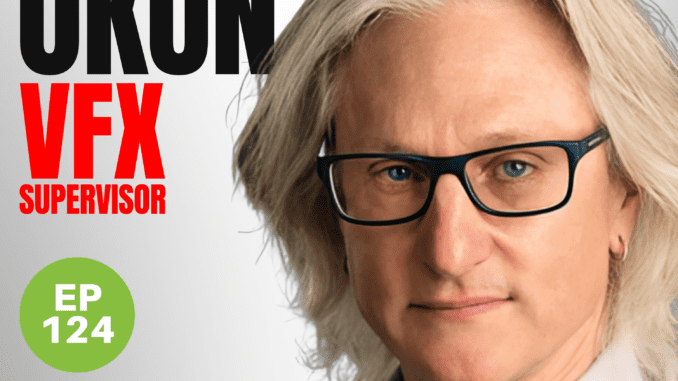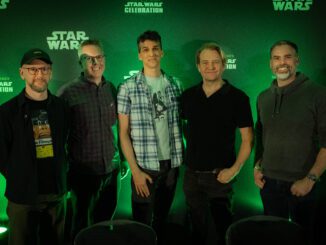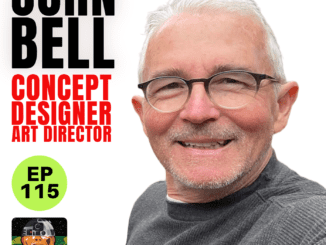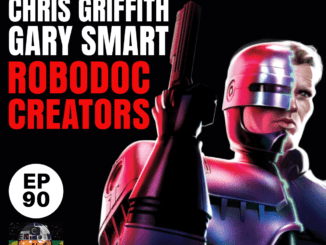
By Jamie Benning
Filmumentaries.com
Episode 124
Like many visual effects artists of a certain vintage, Jeff Okun didn’t plan on a career in VFX. In fact, by his own account, he didn’t even plan to work in film at all. “I’m a completely accidental human being,” he told me with a chuckle. His ambitions began on a very different stage — as a stand-up comic — until a sharply atheistic routine delivered at home earned him a lifetime ban from performing in front of his parents.
Instead, Okun’s creative outlet took the form of magic tricks, homemade stunts, and Super 8 visual gags. “I would blow up model ships and fake fights in rush hour traffic,” he said, “and I’d be in the bushes filming with ketchup for blood.” All of this childhood chicanery ultimately gave way to a fascination with the trickery of movies — the kind of illusions you could only pull off with careful camera work, sleight-of-hand editing, and an appetite for mischief.
Learning the Craft the Hard Way
Okun’s first job in film was with the legendary graphic designer and filmmaker Saul Bass. The experience was, in Okun’s words, “awful,” but also profoundly formative. As Bass’s gopher-turned-editor, Okun was thrown into the deep end. “I hated him,” he laughed. “But he taught me everything: editing, sound, post-production supervision, how to shoot, how to frame. It was a masterclass.”
Working for Bass meant operating in a visually precise, effects-heavy style — layering camera moves, creating in-camera effects, and often relying on labor-intensive optical printing processes. When optical houses turned down Bass’s business — too exacting, too expensive — Okun stepped in with cost-saving workarounds and pricing schemes that actually worked. “We doubled the budget, added a contingency, and somehow still landed exactly on target.”
“By the end of it, I ended up loving the man,” Okun said. “Not because he gave me a break, but because he was so specific and difficult to please that when you did please him, it meant something.
He learned how to prep lineup sheets, how to composite with interpositives, and how to break down 140-layer optical shots into manageable components. “I was just the fix-it guy. I didn’t know what I was doing half the time. I still don’t.”
VFX by Way of Accident
It wasn’t long before optical houses and producers began calling on Okun when their films were in trouble. One fix led to another. His reputation grew as someone who could step into a crisis and calmly solve it — usually with a combination of ingenuity, humour, and brute-force trial and error.
“I think Saul trained me to see puzzles. That’s what it comes down to — seeing what’s broken and putting it together in a way that works. Most of the time, it wasn’t about having the right answer. It was about trying 50 wrong ones.”
This kind of lateral thinking came into its own on films like Stargate (1994), where Okun — working with Jeff Kleiser and Diana Walczak’s fledgling CG company — had to convince director Roland Emmerich that computer graphics were even worth attempting. “Roland didn’t believe in CG. So we built the shot, made the CG glider deliberately less detailed to match the miniature footage. Showed it to him. He said, ‘Exactly — that’s what I’m talking about. Miniatures are the way to go.’ And we said, ‘Nope. All CG.’ That’s when he finally came around.”
(Fun fact, VFX supervisor Jeff Okun was paid homage by Brent Spiner in Independence Day in the role of Dr. Brackish Okun. There’s uh, a slight resemblance.) – Credit to Nofilmschool.com




Be the first to comment